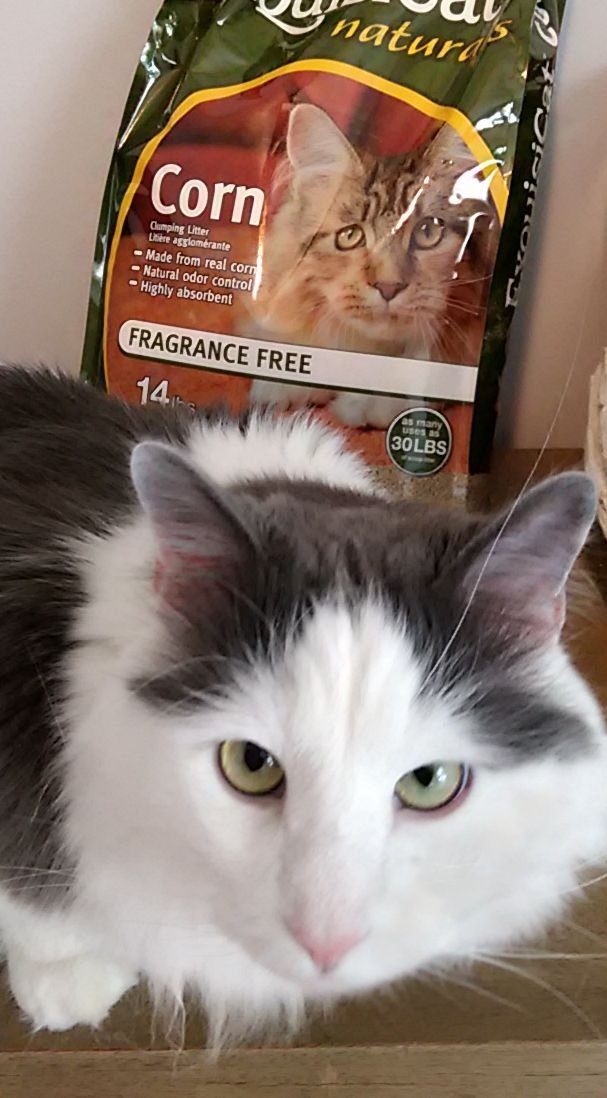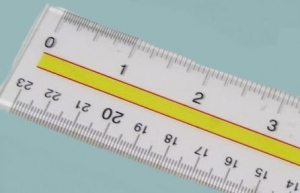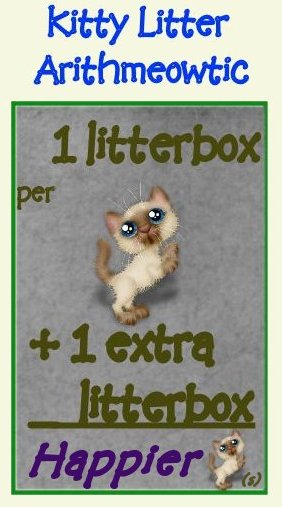To help keep the litterbox experience pleasant for both feline and human family members, consider these essentials.
Types of Litter
Litters can fundamentally be divided into clumping and non-clumping types:
- Clumping means that urine will bind the litter together in clumps. The clumps can then be scooped out shortly after they harden.
- Non-clumping means that urine will be absorbed by the litter. However, the urine can’t be scooped out. It will accumulate until all of the litter is dumped out for the weekly cleaning.
Cat litter can be made from dozens of different substances, from the familiar clay to the more natural corn and pine. The cat’s preference for one type of litter over another is like a human’s preference for a certain type of toilet paper. Ultimately, what matters most is which kind of litter your cat feels comfortable using. When you adopt your cat, try to find out what kind of litter your cat was using at the shelter or foster home – and stick with it, if they find it acceptable.
Many litters claim to be virtually “dust-free”, and this may be true under certain strict laboratory conditions. Here is my experience with several different brands of clay, wheat, pine, and corn litters: All of these will produce a noticeable amount of dust, at least when being poured. If you have respiratory concerns, considering running a HEPA filter while pouring and scooping litter.
For almost every kind of litter, keep the box filled at least three inches deep. There should be enough litter for your cat to bury their waste – this is a natural instinct. If you’re using clumping litter, three inches should also be deep enough to successfully form clumps from your cat’s urine.
If you ever decide to change to a different type of litter, always transition gradually. This is especially true when switching to a litter made from a different substance.
- Intermix the new litter with the old, gradually increasing the percentage of new litter over a period of a few weeks.
- Never make a sudden switch; this could lead to stress for your feline companion. It might also result in litterbox aversion, and eliminating outside the box. It’s better to keep your cat comfortable using the litterbox than to have to convince him to return to it.
Choose an unscented litter. Cats have no desire for their boxes to smell like Early Morning Dewdrops, Botanical Breeze, Summer Sunset, or any other synthetically-concocted fragrance.
Also avoid perfumed deodorizing additives or “air freshening” sprays. A cat’s sense of smell is much more sensitive than a human’s. What appeals to us may well not appeal to our furry friends. A strong, artificial odor of any kind could buy finasteride 5mg online uk inspire your cat to find an alternative to their litterbox.
Boxy, Yet Stylish
There are dozens of different types of litterboxes on the market. You’ll want to purchase a box that is large enough for your cat to comfortably turn around in. In fact, especially if you have more than one cat, you’ll want to maintain more than one litterbox. The rule of thumb is one litterbox per cat, plus one extra.
Some cats are very enthusiastic diggers in the litterbox. You might choose a high-sided box to cut down on litter scattering and tracking, but always go for an uncovered litterbox. The cat doesn’t need to feel trapped inside of the commode, and it’s best for your pet not to breathe in concentrated litter dust.
Quiet, please!
Never place the litterboxes in an area where your cat might be startled while using the box. The venue should be out of the way, low noise, and low traffic.
Keeping it Clean
It’s been said many times, and it still bears repeating: A cat using an unscooped, unclean litterbox is like a person using an unflushed toilet.
- If you opt for clumping litter, scoop out all waste at least once a day. Twice a day is preferable, and more often as needed. Completely change out the litter at least monthly – and wash the litterbox itself with a very mild, unscented detergent. Thoroughly rinse and dry it before refilling with fresh litter.
- Non-clumping litter is a different, more labor-intensive story: You’ll need to scoop the feces once or twice a day. The litter will absorb urine, but the urine will not clump up. Therefore, it will stay in the box until you dump out all the litter, and clean out the box. This must be done once a week – at minimum.
Thinking outside the Box
Every cat has their own habits and quirks when it comes to litterbox usage. Some cats only use one particular brand of clay litter, for example. Some cats do their business without bothering to cover it over — and others dig industriously, as though trying to bury transoceanic cable. One of my cats likes to jump right into the litterbox as soon as I start to scoop – the other prefers to supervise from their cat condo.
Over time you will learn your own cat’s habits and preferences, and be able to cater to them particularly.
In general, make sure you have:
- An unscented litter your cat will use, kept at about a three-inch depth
- Large, uncovered litterboxes — so your cat can turn around comfortably in the box
- Enough litterboxes for the number of cats: One for each cat, plus an extra box
- A quiet place where your cat can use the litterbox undisturbed
…and, perhaps most importantly, - Clean, frequently-scooped litterboxes
If you follow these five basic guidelines, you and your cat should not have any hissy fits when it comes to the litterbox.



